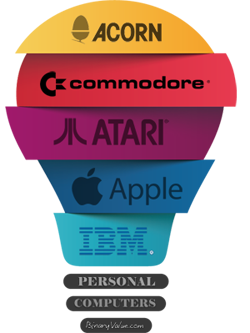About BinaryValue.com -A Tribute to Innovative Computers and the Engineers Behind Them
BinaryValue.com is a tribute to the groundbreaking computers of the past and the brilliant minds who made them possible. This site honors the visionaries who worked tirelessly to design the computer systems that changed the world.

Special thanks go to:
- Tim Berners-Lee – Creator of the World Wide Web, and to CERN for freely sharing this world-changing invention
- Linus Torvalds – Principal developer of the Linux kernel. Without him, building and hosting the modern web would be a luxury reserved for a few
- Jay Glenn Miner – Father of the Amiga, and key engineer behind the Atari 2600 and 8-bit family
- Dave Haynie – Chief engineer at Commodore International, and a vital force in Amiga's evolution
- Sir Clive Sinclair – Inventor of the ZX Spectrum, who brought computing to millions
- Steve Wozniak – The technical genius behind Apple’s early computers
This is a poster I created for the Atari Falcon in 2023...
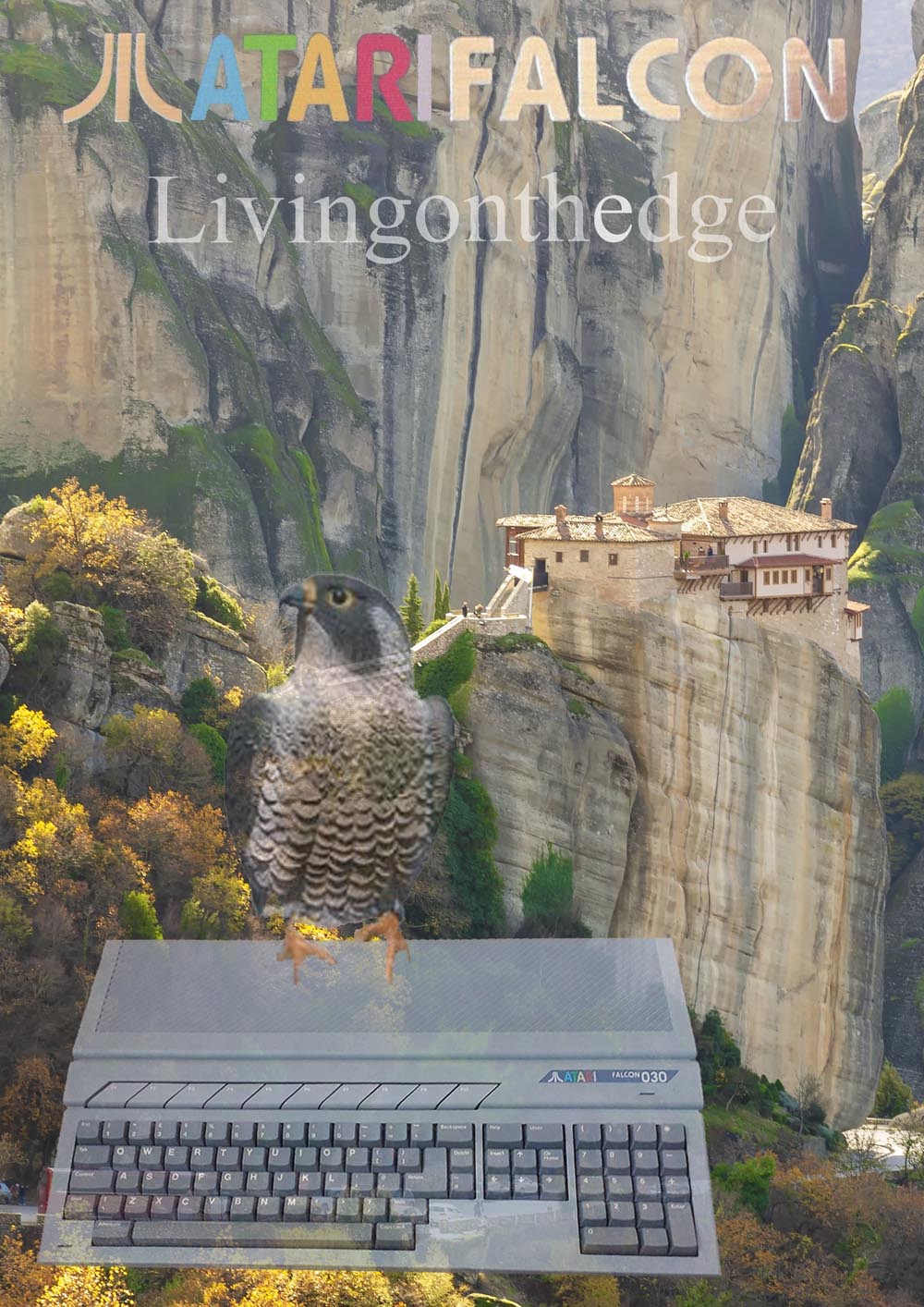
If you'd like a high-resolution version, feel free to email us — we'll send it to you for free.

Here is a poster showcasing the Amiga 1000 I designed in 2022...
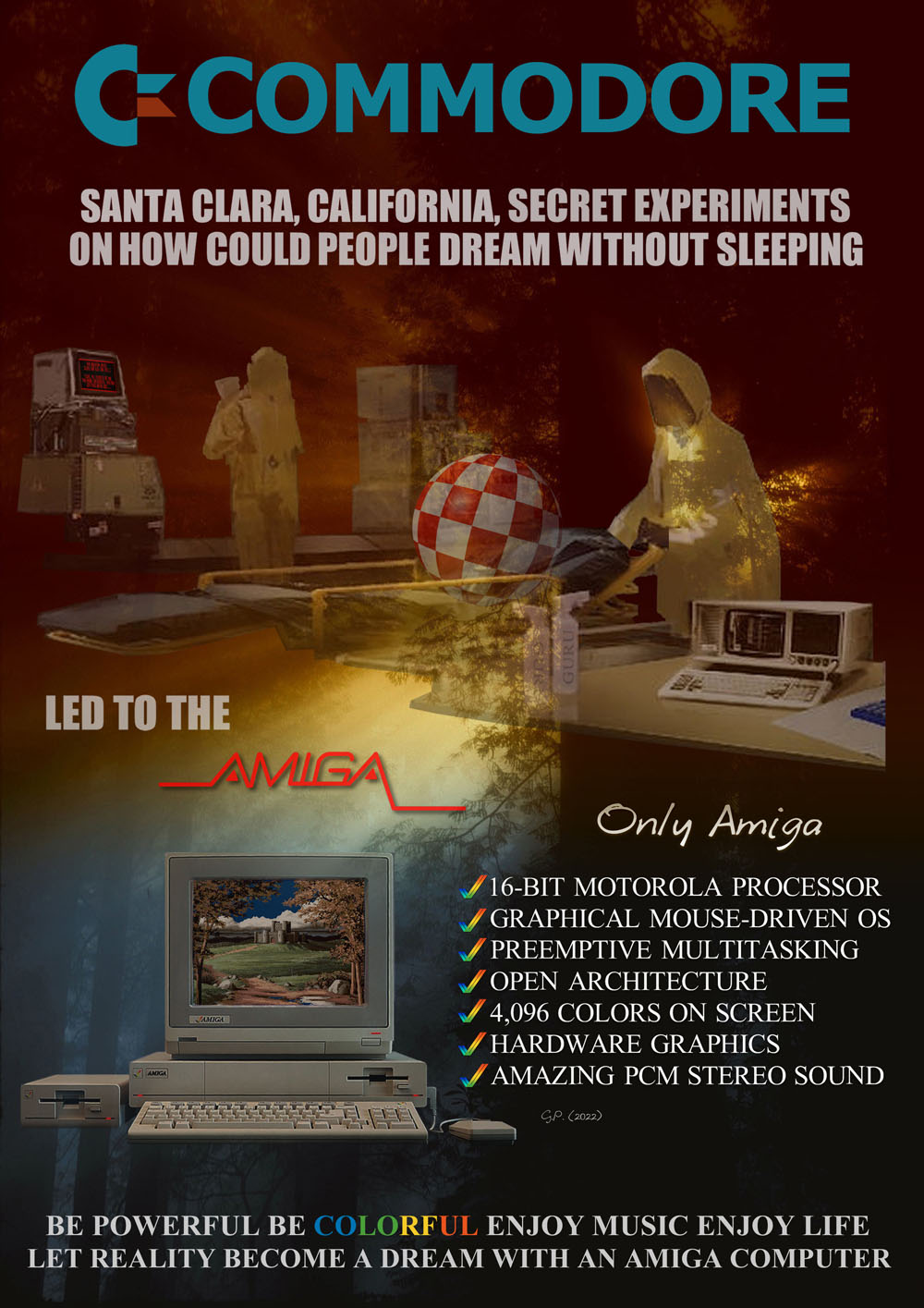
If you wish to download a higher-quality version, email us and it will be sent for free...

Operation Stealth & Cruise for a Corpse
Founded in 1988, Delphine Software International was a French game developer famous for titles like Crusie for a Corpse, Another World, Operation Stleath, and the cinematic platformer Flashback -featuring rotoscoped animation similar to Prince of Persia. Delphine Software was part of the Delphine Group and led by Paul de Senneville with Paul Cuisset as lead designer. Delphine was sold to Doki Denki in 2003. Following Doki Denki’s bankruptcy in 2004, both companies shut down, and their official website was taken offline.
🕵️♂️ Operation Stealth
Operation Stealth, released in the United States as 007 James Bond: The Stealth Affair, is a 1990 point-and-click adventure.
- Platforms: Amiga, Atari ST, and IBM PC
- Publishers: Interplay Productions | U.S. Gold
- Design Engine: Cinématique evo1
- Writers: Paul Cuisset and Philippe Chastel
- Coders: Paul Cuisset, Philippe Chastel, and Jésus Martinez
- Graphics: Michèle Bacqué and Emmanuel Lecoz
- Musician: Jean Baudlot
 ✍️ The Story
✍️ The Story
John Glames, a CIA agent known as James Bond in the U.S., is sent to Latin America to recover a stolen high-tech F-19 stealth plane. In the banana republic of Santa Paragua, his mission quickly goes awry when he discovers that his contact was a KGB agent who tricks him into retrieving sensitive documents. After escaping captivity, Glames is mistaken for a lookalike named Otto, which leads to a series of dangerous encounters. He teams up with Julia Manigua, niece of the country’s president, who reveals that a coup led by Otto has installed a puppet government. Disguised as entertainers, they infiltrate the presidential palace to recover important documents, but are captured again. Glames escapes and pursues the villains through thrilling chases, eventually being rescued by an American submarine.
🤜 The Fighting Classic of the ’90s 🤛
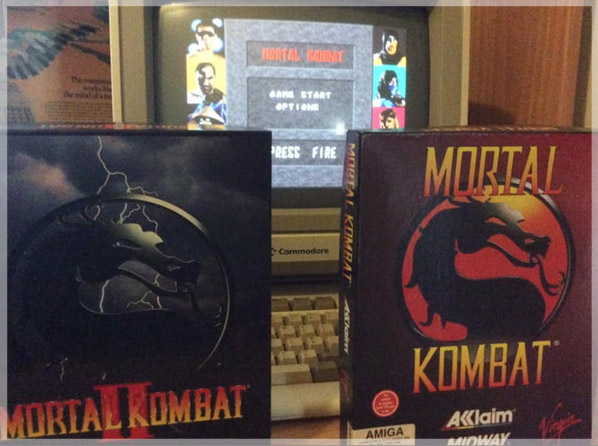
Debuting in 1992, Mortal Kombat quickly rose to global standard in the fighting game genre. The game sold 100 million units worldwide.
- Known for its graphic violence -particularly its iconic "fatality" finishing moves- Mortal Kombat was heavily censored or even banned in several countries including Germany and South Korea
🥋 Mortal Kombat I
Mortal Kombat was a groundbreaking game for the Amiga and PC. Previous conversions of arcade fighting games, such as Street Fighter II, were major disappointments on home computers. This helped Mortal Kombat gain widespread popularity among Amiga users. Below is a list of the various ports of the game released for computers and consoles:
🕹️ Computers: Amiga, MS-DOS
🎮 Consoles: Arcade, Sega Mega Drive, Sega CD, Nintendo SNES, Sega Game Gear, Sega Master System, Nintendo Game Boy
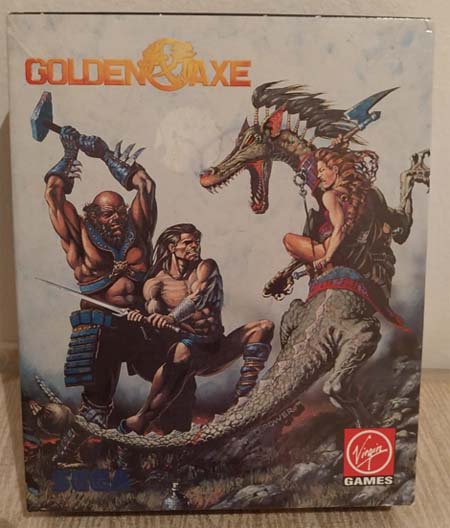
⚔️ A Timeless Arcade Classic
Released in 1989 by Sega, Golden Axe is a classic beat 'em up video game. It was originally developed for arcade machines (System 16B hardware) and was soon successfully ported to computer systems and home consoles. Only the Sega Mega Drive received the full sequels to the game (I, II, and III).
- The game was designed by Makoto Uchida, who also created Altered Beast the previous year.
- Its success led to the development of a franchise, including multiple sequels and various spin-offs.
- Amiga, Atari ST, and MS-DOS versions were released later, in 1990, by Virgin Software.
✍️ The Story
The story is set in the fictional realm of Yuria, a high-fantasy medieval world reminiscent of Conan the Barbarian. The villainous Death Adder has kidnapped the King of Yuria and his daughter, imprisoning them in their own castle. He also seizes the Golden Axe, a powerful magical symbol of the kingdom, threatening to destroy both it and the royal family unless the people submit to his rule.







